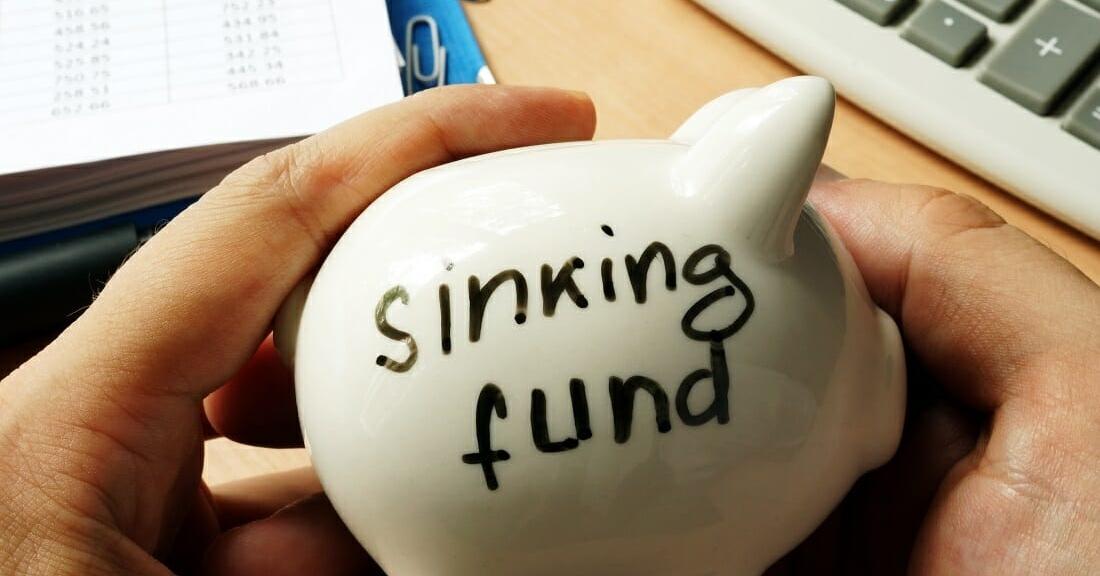Are you curious to know what are sinking funds? You have come to the right place as I am going to tell you everything about are sinking funds in a very simple explanation. Without further discussion let’s begin to know what are sinking funds?
Navigating the realms of personal finance involves more than just budgeting; it requires a strategic approach to saving and planning for future expenses. One powerful tool in this financial toolkit is the concept of sinking funds. In this comprehensive guide, we’ll explore what sinking funds are, their relevance in budgeting, examples, categories, and much more to empower you in your journey towards financial well-being.
What Are Sinking Funds?
A sinking fund is a dedicated savings fund set aside for a specific future expense or financial goal. Unlike an emergency fund that acts as a safety net for unforeseen events, sinking funds are proactive, helping you prepare for expected expenses, both large and small.
What Are Sinking Funds In Budgeting?
In the context of budgeting, sinking funds play a crucial role in ensuring that you allocate funds for future needs systematically. By incorporating sinking funds into your budget, you create a financial roadmap that addresses both immediate and long-term financial goals.
What Are Sinking Funds Vs Emergency Fund?
While sinking funds and emergency funds share the common goal of financial preparedness, they differ in their purpose and application. Emergency funds act as a safety net for unexpected expenses, such as medical emergencies or car repairs. Sinking funds, on the other hand, are designed for anticipated expenses, allowing you to save for specific goals like a vacation, home maintenance, or even a new gadget.
Sinking Funds For Beginners
If you’re new to the concept of sinking funds, the first step is understanding their importance and how they can contribute to your financial stability. For beginners, incorporating sinking funds into your budgeting strategy is a proactive and empowering move.
Sinking Fund Example
Let’s delve into a practical sinking fund example to illustrate how it works. Imagine you’re planning a dream vacation a year from now. By setting up a sinking fund specifically for this purpose, you allocate a certain amount each month, ensuring that when the time comes, you have the funds ready without affecting your daily budget.
Sinking Funds Categories
Sinking funds cover a wide range of categories, catering to various financial goals. Common categories include:
- Home Maintenance: Prepare for repairs or renovations.
- Car Maintenance: Save for routine maintenance or unexpected repairs.
- Vacations: Plan and save for future trips.
- Electronics: Set aside funds for upgrading or replacing gadgets.
- Education: Save for future educational expenses.
What Is A Sinking Fund In Personal Finance?
In personal finance, a sinking fund is a strategic approach to managing your finances. It enables you to stay ahead of expected expenses, fostering financial discipline and minimizing the impact of large or infrequent financial obligations.
Sinking Fund Formula
The sinking fund formula involves determining how much you need to save regularly to reach a specific financial goal. It considers factors such as the target amount, time frame, and expected rate of return on your savings.
Best Accounts For Sinking Funds
Choosing the right account for your sinking funds is crucial. Consider accounts that offer a balance of accessibility and growth, such as high-yield savings accounts or dedicated sinking fund accounts.
Conclusion
In conclusion, sinking funds are a dynamic and proactive approach to financial planning. By incorporating them into your budget, you gain control over both expected and unexpected expenses, paving the way for a more secure financial future. Whether you’re a budgeting novice or a seasoned financial planner, understanding and implementing sinking funds can be a game-changer in achieving your financial goals.
FAQ
What Is A Sinking Fund Example?
Interest payments were to be paid semiannually to bondholders. The company established a sinking fund whereby $4 billion must be paid to the fund each year to be used to pay down debt. By year three, ExxonMobil had paid off $12 billion of the $20 billion in long-term debt.
Are Sinking Funds A Good Idea?
They allow you to save for infrequent expenses and plan for large expenses over time. Having sinking funds can help prevent you from withdrawing money from your emergency fund or going into debt to pay for things. You can use a budgeting app, like You Need a Budget (YNAB) or PocketGuard, to monitor your sinking funds.
Why Do They Call It A Sinking Fund?
Borrowing money by issuing a bond is referred to as floating a bond. Sinking is its opposite, repaying debt or acquiring capital assets without debt.
What Is The Difference Between Sinking Funds And Savings?
A sinking fund is a savings account dedicated to a specific expense you know is coming. It’s different from a regular or emergency savings account, which exists to help pay for unexpected expenses like a new water heater if your current one breaks.
I Have Covered All The Following Queries And Topics In The Above Article
What Are Sinking Funds In A Budget
What Are Sinking Funds In Budgeting
What Are Sinking Funds Example
What Are Sinking Funds?
What Are Sinking Funds Vs Emergency Fund
Sinking Funds For Beginners
Sinking Fund Example
What Are Sinking Funds In Budgeting
Sinking Funds Categories
What Is A Sinking Fund In Personal Finance
Sinking Fund Formula
Best Accounts For Sinking Funds
What Are Sinking Funds









